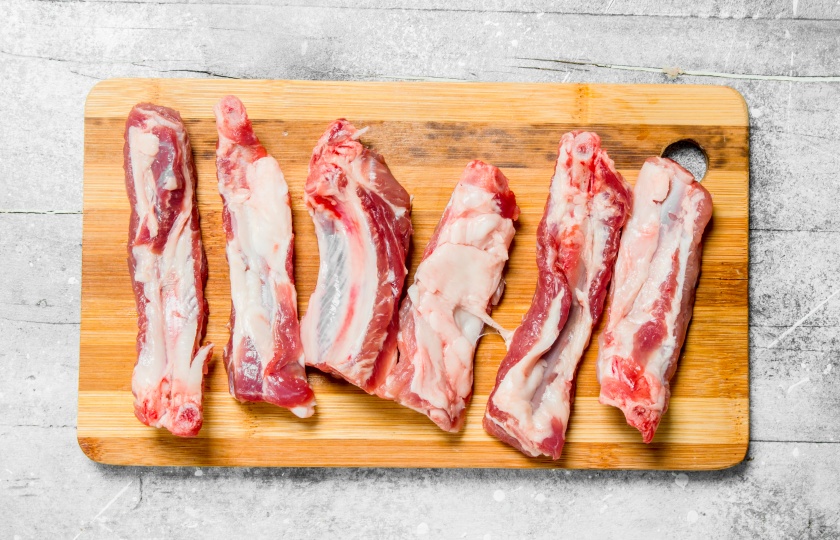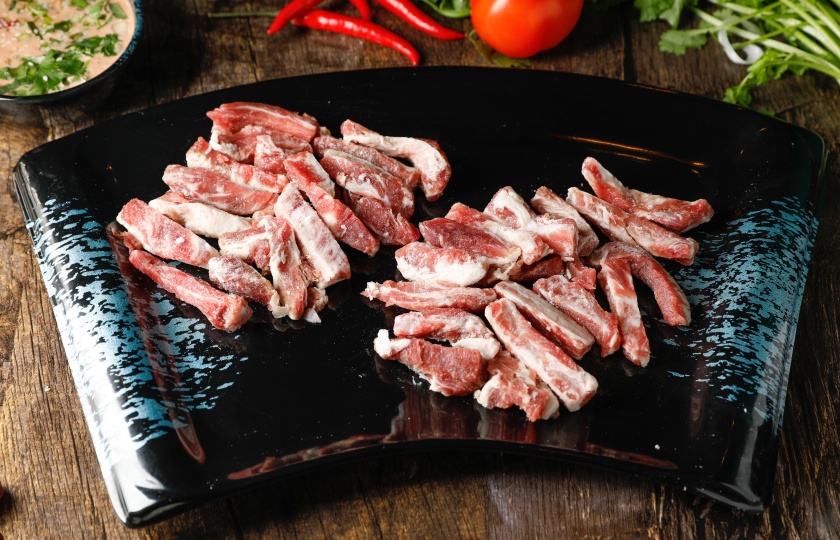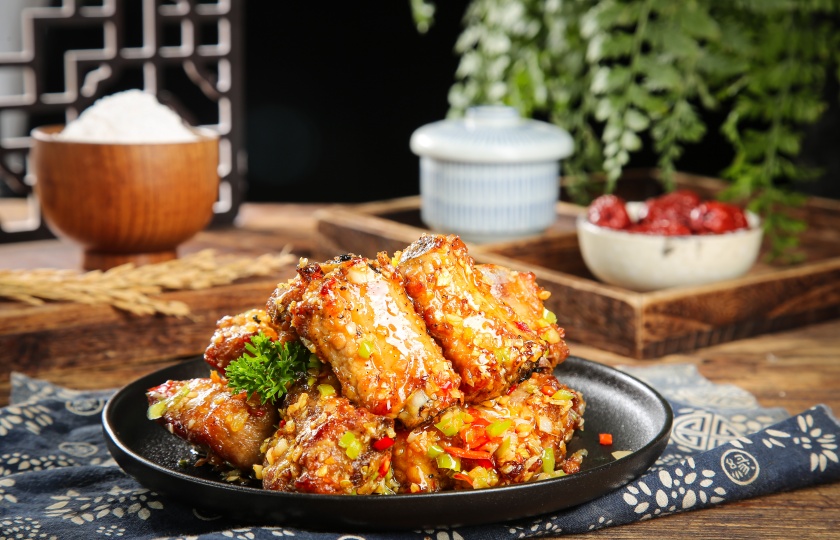Cooking Time: How Long Can You Slow Cook a Rack of Ribs

A row of ribs is placed in front of us. The slow-cooking time has become a key issue. Is it a few hours or even longer? Let me tell you the answer and uncover the secret of slow-cooked ribs.
How long does it take to slow cook a rack of ribs?
Slow-cooking a row of ribs takes about 2 to 3 hours. This depends on the size of the ribs and the tenderness you expect.
For medium-sized ribs, slow-cooking at low temperature for 2 hours can basically make them tender and juicy. If you want them to be more flavorful and tender, extend the cooking time to 3 hours. Generally, control the temperature at 85 to 95°C. This range can make the meat tender without overcooking.
During cooking, the ribs will release collagen, making the soup thick and the meat more delicate. If you want to increase the flavor, fry the ribs until the surface is golden before cooking, and then add side dishes such as onions, carrots, and garlic and cook them together.
Turn the ribs every 30 minutes to ensure that each side is evenly flavored.
What pretreatment is needed for the ribs before slow cooking?
The necessary pretreatments for slow-cooking ribs include three basic steps: cleaning, blanching, and marinating. When cleaning, rinse the ribs with warm water to ensure that there is no blood or bone fragments on the surface. For blanching, prepare a pot of cold water, add a few slices of ginger, pour the ribs into the cold water and bring to a boil over high heat. After boiling for 2 minutes, take them out. This can remove the fishy smell and foam.
When marinating, dry the ribs, add an appropriate amount of salt, pepper, cooking wine and shredded ginger, and mix well by hand. Marinate for 20 minutes. This can make the ribs more flavorful and the soup cooked will be more delicious. If you have enough time, you can put the marinated ribs in the refrigerator for 1 hour.

Why are my slow cooked ribs tough?
In terms of cooking time:
Insufficient cooking time is a common reason for hard slow-cooked ribs. Ribs need to be simmered over low heat for a long time to become soft. Usually, it takes 2 to 3 hours. If the time is not enough, the collagen cannot be fully dissolved and the meat will be relatively hard.
In terms of heat control:
Improper heat control can cause ribs to harden. Slow cooking is suitable for low heat. If the fire is too large, the surface of the ribs will quickly shrink, hindering the internal moisture and heat exchange, making the meat dry. In addition, frequently opening the lid will cause the temperature to fluctuate, thereby affecting the cooking effect.
In terms of rib quality:
The choice of ribs is crucial for the slow cooking result. The ribs of older pigs are relatively hard in texture, and the taste of ribs in different parts is different. The front ribs are more suitable for slow cooking than the back ribs because their meat is tender and has a high collagen content. If you choose a part that is not suitable for slow cooking, it will be difficult to soften even if it is cooked for a long time.
What is the secret to tender ribs?
Rib selection stage
Selecting good ribs is also crucial. The front ribs have tender meat and a lot of collagen and are suitable for slow cooking. Choose fresh ribs with evenly grown meat and an appropriate proportion of fat and lean. Only in this way can the dish have a good taste.
Marinating stage
Marinating has a great impact on the taste of ribs. Using seasonings such as cooking wine, light soy sauce, and white pepper powder, and adding a little starch can retain the moisture in the meat and make the ribs tender. Marinating for 30 minutes to 2 hours is better. During this period, the seasonings can penetrate into the meat and make the taste more abundant.
Temperature control stage
Temperature control is extremely important. For slow-cooking ribs, 80 to 90 degrees Celsius is the most suitable. At this temperature, collagen can be slowly dissolved and the meat will become soft. If using a pressure cooker, first pressurize with high heat for 10 minutes, then turn to low heat and simmer for 20 to 30 minutes. This can quickly soften the meat.
Cooking method stage
There are particularities in cooking methods. First, blanch the ribs to remove the blood foam, and then simmer slowly over low heat. Don't stir constantly while simmering. Keep the humidity in the pot appropriate. Adding some ginger slices and star anise can enhance the fragrance. When the meat can be easily separated with chopsticks, the taste is the best.

Should the ribs be flipped during slow cooking?
When slow-cooking ribs, there is no need to turn them frequently. In the first 15 to 20 minutes, gently turn them 1 or 2 times to ensure even heating. After that, leave them alone.
When cooking at home, many people are afraid that the ribs will not be heated evenly. In fact, it is not necessary. Nowadays, both casseroles and pressure cookers transfer heat evenly. The soup will wrap around the ribs, and the meat will naturally become soft and tender uniformly.
If you turn the ribs too frequently, they are prone to falling apart and lose their integrity. The key is to let the soup in the pot cover the ribs. It is best to control the fire at 80 to 90 degrees. If you are afraid that some places are heated differently, gently shake the pot in the middle. Don't turn with a spatula.
How to tell if the slow-cooked rack of ribs is done?
To determine whether slow-cooked ribs are cooked, mainly through the following four methods:
Check the degree of tenderness of the meat.
Gently poke the ribs with chopsticks. If it can be easily penetrated and the meat is so soft that it can almost fall off the bone, it means it is cooked. Generally, it takes 1.5 to 2 hours.
Observe the color of the meat.
Raw meat is bright red. After being cooked, it will turn grayish-brown or dark brown. If the surface color of the ribs is uniform and there is no blood color, especially where the color change near the bone is obvious, it means it is cooked.
Measure the internal temperature with a meat thermometer.
Insert it into the thickest part of the ribs. When the temperature reaches 70 to 75 degrees Celsius, it means it is cooked. This can kill harmful bacteria.
Look at the viscosity of the soup.
During cooking, collagen will dissolve and the soup will become thick and have a slightly viscous feeling. This also indicates that the ribs are cooked.























